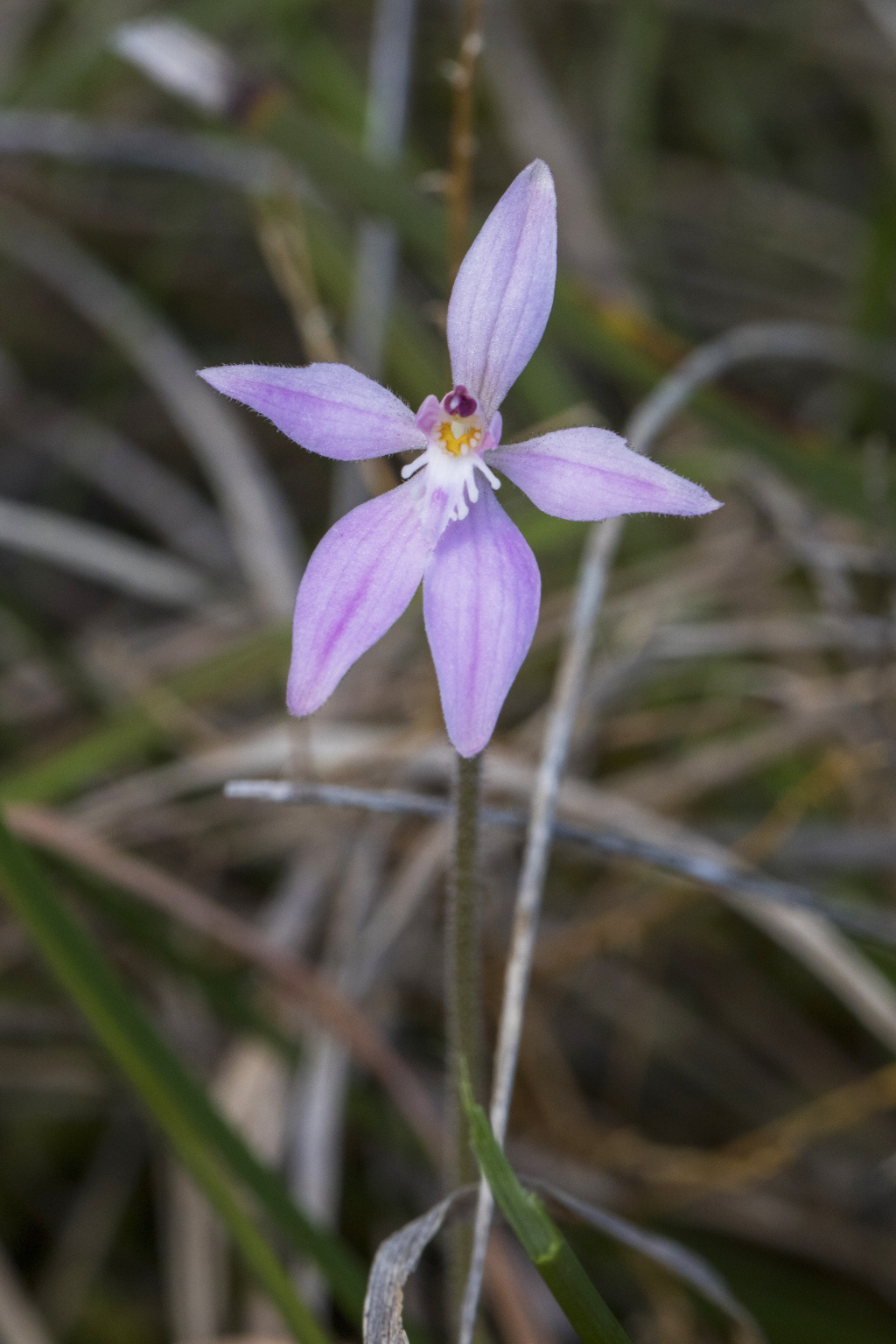Caladenia latifolia
R Br. Pink FairiesFlowering plant 7–40 cm tall. Leaf oblong-lanceolate, 8–18 cm long, 3–20 mm wide. Flowers 1–4, bright pink, rarely white; perianth segments lighter-coloured and glandular-hairy on the outside; dorsal sepal erect, oblong-lanceolate, 12–16 mm long, apex obtuse or broadly acute; lateral sepals free or slightly adhering at extreme base, spreading, oblong-lanceolate, 13–17 mm long, slightly wider than dorsal sepal; petals spreading, elliptic-lanceolate, more contracted at base, shorter and more acute than other segments, 10–14 mm long, often with a few irregular teeth. Labellum sessile, deeply 3-lobed, 5–8 mm long (when flattened), pink or white; lateral lobes oblong, obtuse, barred pink, margins mostly entire but slightly notched apically; mid-lobe recurved, broadly lanceolate, margins with a few blunt linear teeth; calli in 2 converging crescentic rows at or near bend in lamina, thick, linear or club-shaped, inclined away from the throat, yellow. Column erect, moderately winged throughout; anther with a long point. Flowers Sep.–Oct.
Wim, GleP, Brid, VVP, GipP, OtP, WaP, Gold, GGr, DunT, EGL, EGU, WPro, HSF, OtR. Also WA, SA, NSW, Tas. Common on coastal or near-coastal sands, often under tea-tree thickets, rarely extending inland in western Victoria (e.g. Grampians and Mt Arapiles). Often forming dense colonies with conspicuous leaves.
Caladenia latifolia can be distinguished from all other species in Victoria by its rather broad leaf that lies flat on the ground and the unique arrangement of calli on the labellum.
Caladenia latifolia often forms dense colonies by vegetative reproduction.
Entwisle, T.J. (1994). Orchidaceae. In: Walsh, N.G.; Entwisle, T.J., Flora of Victoria Vol. 2, Ferns and Allied Plants, Conifers and Monocotyledons, pp. 740–901. Inkata Press, Melbourne.
 Spinning
Spinning



